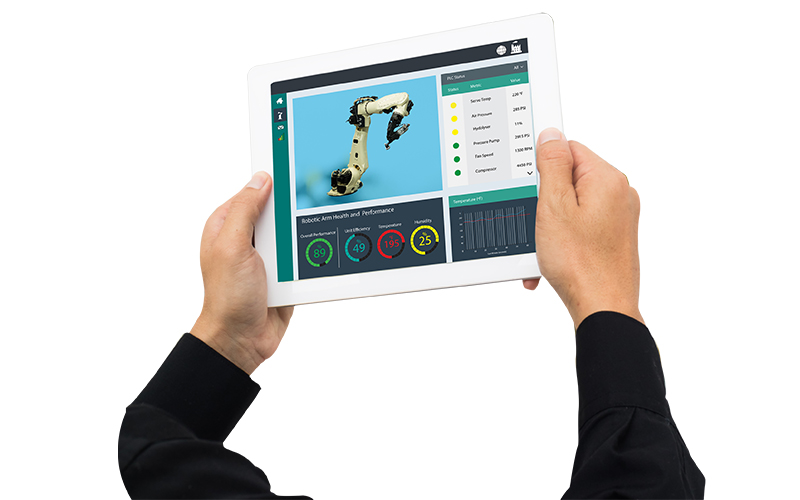BUSINESS TRANSFORMATION
Rising demand for augmented reality in retail and e-commerce
With artificial intelligence, technology can measure rooms in our homes with great accuracy. If this data were available live while we were shopping for furniture in a retail store, and we could watch which furniture fit our idea of home décor, then voila! Consider a scenario while buying high end clothing online. If we were able to critically evaluate the fit, style and colour of choice, wouldn’t that drive a high value purchase?
Augmented Reality (AR) in commerce is changing the retail and e-commerce environments. According to the Adobe Digital Economy Index, with the COVID-19 pandemic came a boost of $183 billion for e-commerce because online portals were the main source of shopping for several consumers. So, after the Covid-19 pandemic, it made sense for brands to drive sales using AR to provide customers a realistic solution with detailed and complete information, from the comfort of their homes.
AR is an alternative way of seeing the natural world. It uses digital components in layers on a live view, as the examples above indicate, with devices like mobile phones. Sensory elements like sound and 3-dimensional objects offer enhanced perception, giving customers an understanding of the product, as closely as they would, if they were in front of it, in a store.
An AR system has three main features
- Combines real and virtual worlds
- Allows for real-time interactions
- Allows for 3-D rendering of objects
So, by making customers “try on” products before buying them, e-commerce companies can make them experience products digitally.
Ideally, e-commerce companies can and should engage customers using AR at various stages of a customer journey, each time progressively providing digital layers of heightened sensory perceptions from awareness through to the buying and advocacy of the product.
Data around AR in retail e-commerce
- Globally AR advertising revenue grew from half a billion dollars in 2019, to $1.41 billion in 2020.
- According to Google, 66% of people are interested in utilising AR technology to help them buy.
- 71% consumers said they would shop more often from brands with AR.
- Approximately 90 percent of companies in the $100 million-$1 billion annual revenue bracket are using AR technology to boost sales.
How e-commerce businesses are using AR
- Virtual try-on solutions: Every online clothes-shopper fears that clothes bought online will be ill-fitting, not look good or not worth the price. AR can help shoppers understand what they are buying and how the item will work for them. Clothing, accessories, eyeglasses, and makeup have AR based applications helping customers.
- Preview placement: Consider the example cited above where a customer is looking to re-decorate their home. Placing a sofa or table in a pre-measured home via AR gives the customer a clear sense of how the furniture item would look, in an environment as close to their home as possible.
- Interactive user manuals: For items like specialised laptops, interactive manuals can provide interactive and contextual support while customers evaluate the product.
- Social media filters: AR filters on popular social media channels are a great way to showcase a new product and have customers “test” a variety of filters.
Benefits of Augmented Reality in Ecommerce
- Highly engaging customer experiences: AR gives customers the opportunity to view and interact with products as they would in a physical store. Future AR experiences can provide for social gamification much like shopping with a friend.
- Flexible customization: AR helps customers explore products like clothing and accessories with layered options for colour, style, size, and positioning, that improves engagement and likelihood of purchasing.
- Increased shopping time and higher conversion rates: Introducing AR driven interventions as customers shop online engages them to stick on. Conversion rates increased 90% for customers engaging in AR v/s those that don’t.
- Develop new products quickly: Using customers to test products with AR gives creators near real-time insights for product improvement resulting in new products being rapidly developed.
- Improve customer relationships: A 2019 report from UPS that surveyed online shoppers found that 27% returned goods as they didn’t fit the description. In the UK, 60% of shoppers between the ages of 16-34 returned goods. With 3D-virtualization, flexible customization and virtual try-ons, customer relationship and lifetime value can dramatically increase for a retail e-commerce business.
Retail e-commerce will use a lot more AR once the technology embeds itself deeper into the market. This creates a realistic experience for customers with tangible benefits for the business. Established brands have incorporated AR to improve shopping experiences. Today’s e-commerce businesses must explore and adopt this technology into their business to grow and thrive in the future.
*For organizations on the digital transformation journey, agility is key in responding to a rapidly changing technology and business landscape. Now more than ever, it is crucial to deliver and exceed on organizational expectations with a robust digital mindset backed by innovation. Enabling businesses to sense, learn, respond, and evolve like a living organism, will be imperative for business excellence going forward. A comprehensive, yet modular suite of services is doing exactly that. Equipping organizations with intuitive decision-making automatically at scale, actionable insights based on real-time solutions, anytime/anywhere experience, and in-depth data visibility across functions leading to hyper-productivity, Live Enterprise is building connected organizations that are innovating collaboratively for the future.






